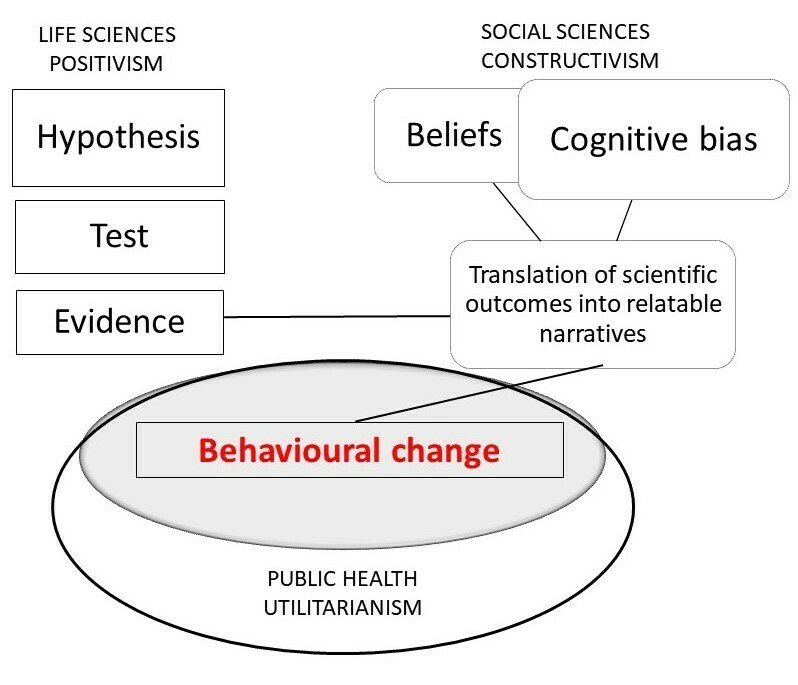Prof Giampiero Favato and Cristina Oliva, MD, explain how storytelling shapes health behaviours beyond the numbers. Here, we learn lessons from COVID-19 data miscommunication
The COVID-19 crisis brought to light the critical role of numbers in shaping our world, especially in times of emergency. Mathematical models became indispensable tools for governments, guiding them in making life-saving decisions like initiating lockdowns and halting non-essential services. The media frequently spotlighted these models, illustrating the virus’s rapid spread.
Central to this narrative was the ‘reproduction number’ or ‘r-number,’ a statistic indicating the average number of people to whom one infected individual could pass the virus.
Media reports on the r-number aimed to motivate the public to adopt protective practices like social distancing and mask-wearing, which are crucial in curbing the virus’s spread. However, the widespread dissemination of this data didn’t guarantee universal comprehension or appropriate response.
In conveying the gravity of COVID-19, simple data visualisations proved more accessible. The iconic ‘flatten the curve’ graph symbolised the pandemic’s challenges, demonstrating how preventive measures could decrease infections and spare healthcare systems from collapse. Despite their straightforwardness, these visuals sometimes fell short of conveying the individual risk posed by the virus and the critical need for personal adherence to health guidelines.
Our COVID-19 research
At Kingston University, we asked ourselves a fundamental question: how can COVID-19 data be presented in a way that informs and inspires people to adopt responsible behaviours willingly? Italy’s experience, as one of the first countries to grapple with the harsh realities of COVID-19 offered a unique case study. Our research aimed to delve into the effectiveness of Italy’s strategies and how the Italian public reacted to the government’s decisions.
Between 2020 and 2022, we conducted three studies, each aimed at utilising the health beliefs to prompt positive behavioural changes.
The first study (1) highlighted the shortcomings of the widespread “flatten the curve” message in effectively communicating the pandemic’s personal risks and severe consequences. By concentrating on the underlying determinants of public health and illustrating the disparities in mortality across regions, we personalised the statistical data, essentially putting a human face on the numbers.
Our conclusions suggest that significantly reducing social interactions in major urban areas, coupled with the prompt isolation of the elderly and those with diabetes, could drastically lower the death toll in upcoming COVID-19 waves.
The second study (2) presented actionable strategies to minimise COVID-19 exposure by making more informed choices about everyday activities and the places we frequent. It revealed a considerable variation in exposure risks associated with different activities and even within the same activity at various venues. This finding underscores the critical need to prioritise managing social activities and indoor environments in our fight against COVID-19.
We adopted a straightforward, numerical approach to quantify exposure risk, providing a tool for policymakers to convey the critical need for stringent containment measures effectively. The main impact of this research lies in its ability to inform individuals about the specific and comparative risks of COVID-19 exposure, thus enabling them to make conscious, safer decisions in their daily lives.
The third study (3) focused on overcoming psychological obstacles to preventive actions in the face of new COVID-19 variants, highlighting the need to adhere to established methods such as vaccination and social distancing. By employing a sophisticated game model, we demonstrated that following the original prevention plan is the most effective approach. This approach aims to dismantle the mental barriers that hinder the efficacy of widespread vaccination and social distancing.
Conclusions: The power of narrative
In conclusion, our exploration into public health messaging through narrative power reaffirms that data alone is not enough to foster meaningful behaviour change. The project on representing COVID-19 data has underscored the pivotal role of narrative in contextualising health risks and empowering individuals to make informed decisions.
While Public Health decisions will continue to be grounded in the validity of medical evidence, this research identified the main barrier hindering a transformative change in its research paradigm: the translation of scientific outcomes into cues for action.
This project is a compelling testament to the necessity of integrating storytelling into public health strategies. It is not merely the presentation of data, but the narrative woven around it that resonates with the public, driving them to embrace socially responsible behaviours.
Ultimately, the power of narrative in public health lies in its ability to humanise data, turning statistics into stories that inspire action. It bridges the gap between knowledge and empathy, leading to a more engaged and informed public. Integrating narrative-driven strategies in public health messaging will be crucial in shaping a more health-conscious society as we move forward.
References
- Oliva C, Di Maddaloni F, Marcellusi A, Favato G. Cross-regional variations of Covid-19 mortality in Italy: an ecological study. J Public Health (Oxf). 2021 Jun 7;43(2):261-269. doi: 10.1093/pubmed/fdaa248.
- Oliva C, Favato G. Risk of Exposure to COVID-19: Visit Duration Data Can Inform Our Daily Activities Choices: An Epidemiological Investigation Using Community Mobility Data from the Metropolitan Area of Genoa, Italy. Int J Environ Res Public Health. 2021 Apr 27;18(9):4632. doi: 10.3390/ijerph18094632.
- Oliva C, Favato G. From 15 Minutes to 15 Seconds: How the Delta Variant Changed the Risk of Exposure to COVID-19. A Comparative Epidemiological Investigation Using Community Mobility Data From the Metropolitan Area of Genoa, Italy. Front Public Health. 2022 Jul 5;10:872698. doi: 10.3389/fpubh.2022.872698.

This work is licensed under Creative Commons Attribution-NonCommercial-NoDerivatives 4.0 International.


